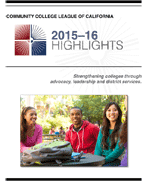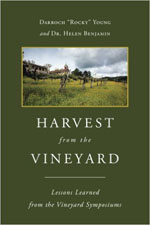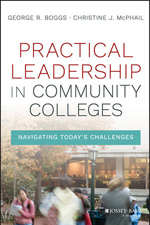League Releases Report on Highlights from 2015-16

What have we done for you lately? To remind our members of the value of League membership, we prepared a brief report highlighting exactly how we strengthen community colleges through advocacy, leadership development and district services. This report provides information about the League's mission and summarizes achievements for the 2015-16 fiscal year. More importantly, League staff would like to take this opportunity to thank our 72 districts for their tireless work on behalf of students and our communities.
Read the 2015-16 Highlights Report
Board Member Spotlight
CEOCCC Board Member Frank Gornick
West Hills Community College District (West Hills CCD) Chancellor Frank Gornick embodies what the Aspen Institute and other national organizations concerned with the future of community college leadership view as the ideal CEO: someone with at least 10 years in the position; an unrelenting commitment to student success; an ability to create lasting change; a willingness to take significant risks to advance student success; and a leader possessing a strategic vision reflecting community needs and involving external partners. And it certainly helps if you are well-respected by your colleagues, peers, and trustees, as is clearly the case with Frank.
 Unlike many top athletes and others in leadership positions, Chancellor Frank Gornick will be retiring at the top of his game. Hired as superintendent/president in 1994, Gornick announced his retirement for the end of the 2016-17 academic year following 23 years of district leadership. Gornick and West Hills CCD are recipients of numerous awards, including statewide recognition for best practices in diversity, technology, and as a highest performing institution. Gornick’s statewide contributions also include being elected in 2010 by colleagues to the League’s CEOCCC Board, where he served as Board President during the 2014-15 academic year.
Unlike many top athletes and others in leadership positions, Chancellor Frank Gornick will be retiring at the top of his game. Hired as superintendent/president in 1994, Gornick announced his retirement for the end of the 2016-17 academic year following 23 years of district leadership. Gornick and West Hills CCD are recipients of numerous awards, including statewide recognition for best practices in diversity, technology, and as a highest performing institution. Gornick’s statewide contributions also include being elected in 2010 by colleagues to the League’s CEOCCC Board, where he served as Board President during the 2014-15 academic year.
One won't hear about awards or accomplishments in speaking with Frank Gornick about the West Hills CCD but a district culture where colleagues refer to one another by first name, where a flat organizational structure employs technology and centralized services so that it can invest more resources in student services and the central enterprise of teaching and learning, and a district where significant growth over the years has increased access and support for the Central Valley communities that it serves.
Under Gornick's leadership, a successful local bond measure resulted in a $19 million upgrade of the Coalinga Campus. This was followed by the construction of a second campus - West Hills Lemoore - which opened its doors in 2002. The district also operates the North District Center, Firebaugh, with outreach to more rural parts of its service area. During more than two decades of Gornick's leadership, West Hills CCD passed more than $300 million in facility upgrades and garnered over $120 million in grants from its nationally-recognized grants operation.
Reflecting upon Frank Gornick's accomplishments as chancellor of the West Hills CCD, Trustee Jeff Levinson explained to The Leader newspaper on June 30, 2016 that in 1994 the district was struggling with enrollment and, "Dr. Gornick brought a vision and under his tutelage we transitioned to a multi-college district that has created opportunities for thousands of students. We were looking for someone to lead us forward, and his leadership enabled us to grow our facilities to meet the demand. He's had huge impact on our communities and on student success."
Gornick points to "academic failings at the University of Arizona" as leading to his introduction and embrace of community colleges, and more specifically his own student experience at Coalinga College, which is now West Hills Coalinga. Gornick describes support from faculty, the community, and the larger campus environment as central to his decision to choose community college teaching as a professional goal. Reflecting upon the powerful impact his own higher education experience had on his life, Gornick explains, "When I graduated from Coalinga College, I had a better sense of who I was as a person and how I wanted to live my life."
Asked about his leadership style, Gornick observes, "I've always thought the best way to lead is by example. Treating people with respect, being clear about expectations, provide mentoring and training when appropriate and good honest feedback is always helpful." He credits a retired West Hills CCD administrator for fostering a district culture where the fundamental premise for all decisions are to "think of students first, then decide."
Gornick points to the demographic shift as a key issue for community colleges, as well as pointing to the need for a more nimble, flexible, and responsive approach to the communities we serve. "Community college leaders in California need to manage change."
Apart from being happily married for 48 years to Gloria Garcia - who Gornick met in a psychology class at Coalinga College and with whom he enjoys traveling and cooking - he identifies spending time with his young granddaughter, Isabella, as his greatest joy. Upon retirement in July of 2017, Gornick mentions a "big bucket list," as well as spending more time in Lake Tahoe with Gloria as top priorities.
CCCT Board Member Ann Ransford

Glendale Community College (GCC) Trustee and First Vice President of the California Community College League Trustee (CCCT) Board Ann Ransford credits her experience as a student, at what was then Oakland City College (now Merritt College), as central to her professional success and lifelong passion for the mission of California Community Colleges.
Trustee Ransford describes "having a good time in high school" and finding her experience at Oakland City College instrumental in a higher education journey that included earning a bachelor's degree from San Jose State, and ultimately a master's degree from Pacific Oaks College in Pasadena. Reflecting upon the investment California made in its public institutions of higher education during that time, Ransford mentions $248 as the cost for her eight semesters as an undergraduate.
Ransford spent a career in public service, including 37 years at GCC where she served multiple roles with 22 years as the Director of Communications, Marketing and the Foundation prior to her retirement in 2006. Fortunately for GCC and the League, Trustee and First Vice President Ransford continued her public service for community colleges with her election to the GCC Board of Trustees in 2009, and her tenure on the CCCT beginning in 2012.
In addition to her service to community colleges, Ransford was on the Executive Board of the YWCA, Chair of the City of Glendale Parks, Recreation and Community Services Commission, and active in several organizations including the Glendale Chamber of Commerce, Rotary, Temple Sinai, as well as earning the J. Walter Smith Award from the Glendale Alumni Association. Last month Trustee Ransford was appointed to the Fiscal Crisis & Management Assistance Team (FCMAT) by the CCCT Board.
Trustee Ransford expresses tremendous enthusiasm for several programs at GCC including their Baja Field Station located in Bahia de Los Angeles, in the state of Baja California, Mexico. The program offers GCC students the opportunity for field study in an area with tremendous biodiversity, highly regarded by scientists and educators researching and teaching about the natural world. Ransford also points to GCC’s Engineering Design Manufacturing Program, the Planetarium, and increasing CTE offerings, including 3D Printing. Equally impressive to Ransford is the activity and success of the Associated Students, the Foundation, and the dedication of the GCC Faculty illustrated in their numbers on the Student Scorecard. Finally, she describes a cohesive Board of Trustees, and excellent leadership beginning with former League President and CEO, Dr. David Viar.
When asked for advice she would offer newly-elected trustees, Ransford responded, "Learn, learn, learn. Earn the League's Excellence in Trusteeship Certificate, attend conferences, and meetings." As for challenges facing GCC and California Community Colleges, Trustee Ransford cites the lack of financial resources and, therefore, the need to obtain alternative funding as important. She explains that many colleges are having enrollment challenges and to maintain and bolster quality community colleges requires increased resources for operations.
As a means to support access and student success, the GCC Board of Trustees recently passed a focus area concerning the need to expand the use of Open Educational Resources (OER), and to explore the establishment of a zero-textbook-cost degree at GCC.This aligns with CCCT Board's goals during the 2016-17 academic year.
Asked about hobbies and leisure time pursuits, Ransford enjoys downhill skiiing, sharing fellow CCCT Board member Linda Wah's passion for kayaking, sewing, and traveling, and spending time both with her family, as well as with her rescue dog, Mindy.
Recommended Reading
Confronting Complexity as 21st Century Community College Leaders
Harvest from the Vineyard: Lessons Learned from the Vineyard Symposiums
by Darroch “Rocky” Young and Dr. Helen Benjamin
Available for purchase from Amazon (click here). All proceeds from sales will go directly towards a student scholarship fund.
Practical Leadership in Community Colleges: Navigating Today’s Challenges
by George R. Boggs and Christine J. McPhail
Available for purchase from Amazon (click here).
While community college CEOs, administrators, trustees, and others interested in community college leadership can benefit from research and writing on corporate and nonprofit leadership, the utility of works focused directly on community college leadership in the early part of the 21st Century is unmistakable; and this is especially true when the works are written by accomplished practitioners with extensive experience as campus and district leaders. Well-timed to coincide with the start of fall term, former Los Angeles Community College District Chancellor Rocky Young, current Contra Costa Community College District Chancellor Helen Benjamin, and superintendent/president emeritus of Palomar College George Boggs, and co-author Christine McPhail, president emerita of Cyprus College offer two books that confront directly many of the most salient and challenging issues facing our sector’s leaders.
 In Harvest from the Vineyard: Lessons Learned from the Vineyard Symposiums, Young and Benjamin begin by chronicling the genesis of the Vineyard Symposium – a professional development retreat for experienced college CEOs – as the brainchild of David Wolf and Steve Weiner: California-based higher education practitioners and researchers concerned with the lack of opportunity for higher education CEOs to become engaged in confidential discussions with peers and education professionals cognizant of the complexity of their leadership challenges. The Vineyard Symposium also sought to provide CEOs an opportunity to establish professional relationships and a network of colleagues. The Symposium began in 2001 with both community college and baccalaureate degree-granting institution presidents and was limited to eight participants. In 2006 the decision was made to invite only permanent community college presidents and chancellors – a practice which continues to this day. In 2007, the Community College League of California joined as a sponsor of the Symposium.
In Harvest from the Vineyard: Lessons Learned from the Vineyard Symposiums, Young and Benjamin begin by chronicling the genesis of the Vineyard Symposium – a professional development retreat for experienced college CEOs – as the brainchild of David Wolf and Steve Weiner: California-based higher education practitioners and researchers concerned with the lack of opportunity for higher education CEOs to become engaged in confidential discussions with peers and education professionals cognizant of the complexity of their leadership challenges. The Vineyard Symposium also sought to provide CEOs an opportunity to establish professional relationships and a network of colleagues. The Symposium began in 2001 with both community college and baccalaureate degree-granting institution presidents and was limited to eight participants. In 2006 the decision was made to invite only permanent community college presidents and chancellors – a practice which continues to this day. In 2007, the Community College League of California joined as a sponsor of the Symposium.
Since becoming facilitators of the Symposium in 2012, Young and Benjamin explain that after working with over 125 different CEOs, "the facilitators have noticed there are certain challenges or issues that seem to appear in one form or another almost every year" (Young & Benjamin, 2016, p. xiv). These issues are described as systemic challenges confronting community college leaders. The author's experience at the Symposium working with multiple CEOs over the years provides readers with perspectives emanating from educational leaders in the field grappling with substantive and challenging issues on campus and at the district level. Rather than abstract concerns CEOs might face, the topics and issues included in Harvest are those most likely to keep CEOs awake at night.
In terms of limitations of the book, the authors describe the inevitable give and take of real time discussion at the Symposium, and recognize that each situation facing leaders is unique to the particular circumstances and context they confront. Thus, although there are no "right" answers to these questions and issues, the authors offer recommendations and approaches with concise rationales for their counsel described throughout the text. To their credit, Young and Benjamin view the suggestions as launching pads for deliberate and purposeful discussions at the district and college-level. Although the authors state that the primary audience for the text is experienced CEOs, it is evident that a variety of practitioners and aspiring CEOs will benefit from its contents.
Harvest covers a variety of issues: from building trust and changing college culture, to participatory governance and working with a board of trustees. Each chapter is self-contained, and readers could easily use it as a handbook to focus on discrete leadership challenges. Additionally, each chapter begins with a list of bullet points offering an overview of the key issues to be discussed. The text includes a useful appendices that offer recommendations for working with board chairs, survival and success tips from experienced CEOs, and Leadership Blues which is described as an opinion piece written by Vineyard Symposium co-founder Steve Weiner, and James G. March, professor emeritus in the graduate school of education at Stanford University. Benjamin and Young explain that Leadership Blues is sent to Vineyard Symposium participants to "stimulate their thinking about their presidency" (Young & Benjamin, 2016, p. 139).
Readers searching for a straight forward, no nonsense approach to key issues confronting community college leaders will appreciate the book's concise style and content. Those searching for in-depth background and lengthy contextualization of issues will wish to supplement their reading with books covering this ground. Similarly, apart from the appendices, Harvest does not include a list of references or companion books and articles for further exploration and background on the issues; it is simply not the purpose of this book.
Readers seeking useful and intelligent advice for confronting perennial and substantive issues from experienced well-respected community college leaders will not be disappointed. Although the Vineyard Symposium itself is for experienced California CEOs, the discussion of important issues in the text is instructive for a variety of audiences including: CEOs outside of California seeking insight into the largest public system of higher education in the US; college presidents interested in learning about issues facing a chancellor of a multi-college district; lay persons interested in learning more about the challenges and opportunities confronting community college leaders in the 21st century; trustees and external stakeholders desiring to learn more about community college leadership; and community college personnel and students eager to learn about issues and strategies relevant to campus leaders.
 Both Harvest and Practical Leadership by Boggs and McPhail discuss funding, regulations, accountability, accreditation, trustees, governance, diversity, equity and inclusion, personnel issues, and life balance. Boggs and McPhail have more extensive sections on safety and security issues, as well as a more complete consideration of the community college mission. All four authors emphasize the complex nature of the issues confronting educational leaders, therefore there are no firm answers for campus and community-specific issues and that in-depth discussion and contextualized consideration of the particular circumstances surrounding these issue areas is vital.
Both Harvest and Practical Leadership by Boggs and McPhail discuss funding, regulations, accountability, accreditation, trustees, governance, diversity, equity and inclusion, personnel issues, and life balance. Boggs and McPhail have more extensive sections on safety and security issues, as well as a more complete consideration of the community college mission. All four authors emphasize the complex nature of the issues confronting educational leaders, therefore there are no firm answers for campus and community-specific issues and that in-depth discussion and contextualized consideration of the particular circumstances surrounding these issue areas is vital.
In Practical Leadership In Community Colleges: Navigating Today's Challenges, Boggs and McPhail identify the increasing complexity facing today's community college leaders as an animating influence for the book. They point to increased internal strife and external political influence complicating governance; increased concerns for campus safety and security; and more government mandates and reporting requirements in a time of shrinking public resources.
Each chapter includes a list of "Issues to Consider" with questions for consideration and debate. Additionally, “case scenarios” offer opportunities for individuals or groups to consider varying strategic approaches to challenges. Similar to Harvest, Practical Leadership need not be read straight through. Boggs and McPhail are explicit about how readers may approach the book, "It is designed to be a resource tool for community college leaders and prospective leaders to learn how to manage important issues and to help their institutions in the transformation process" (Boggs & McPhail, 2016, p. xxii,). The authors argue that although the issues education leaders face are multiple, diverse, and often complex, and there are multiple methods to analyze a leader's performance, the ultimate test of leader concerns anticipation and management of issues that emerge. The author's posit, "...the exact nature of the issue is not as important as the specific skills that allow leaders and policy makers to manage effectively the diverse issues that are critical to fulfilling the institution's mission successfully" (Boggs & McPhail, 2016, p. 6). Boggs and McPhail present an issue management model based upon research by Bill Piland, a doctoral student at San Diego State University.
In contrast to Harvest, the authors of Practical Leadership include historical background and context surrounding contemporary community college issues and concerns. In addition to recommendations for how to approach concerns such as the so-called Completion Agenda, increasing regulations, and decreasing state and local financial support, Boggs and McPhail present context, background, and literature germane to the issues. In many ways, Harvestand Practical Leadership compliment one another quite well. One could easily see a certain online book seller suggest these as companion books for those interested in community college leadership.
With community colleges garnering some of the recognition – although not the necessary resources – they deserve, these books are informative, practical, and timely additions to the literature concerning leadership of democracy's colleges. The authors of these books are practitioners with more than a century of combined community college leadership and experience, and readers will find themselves far more conversant in the key issues facing community college leaders, as well as practical and actionable strategies and approaches to advance the critical mission of opportunity’s colleges.







